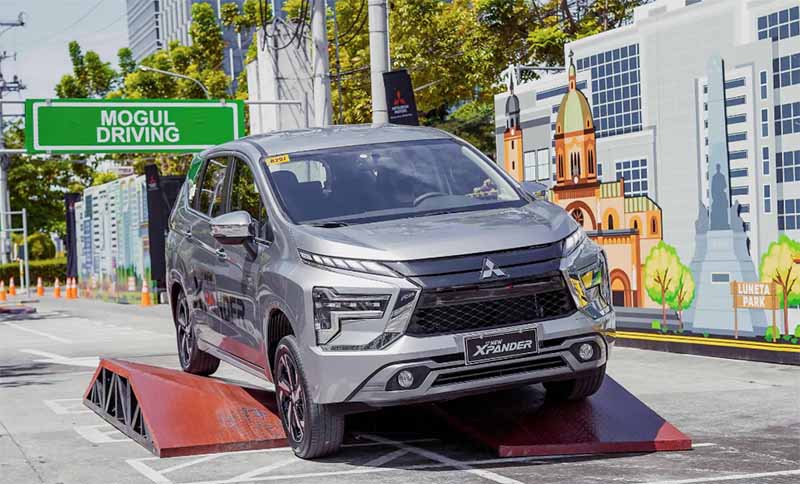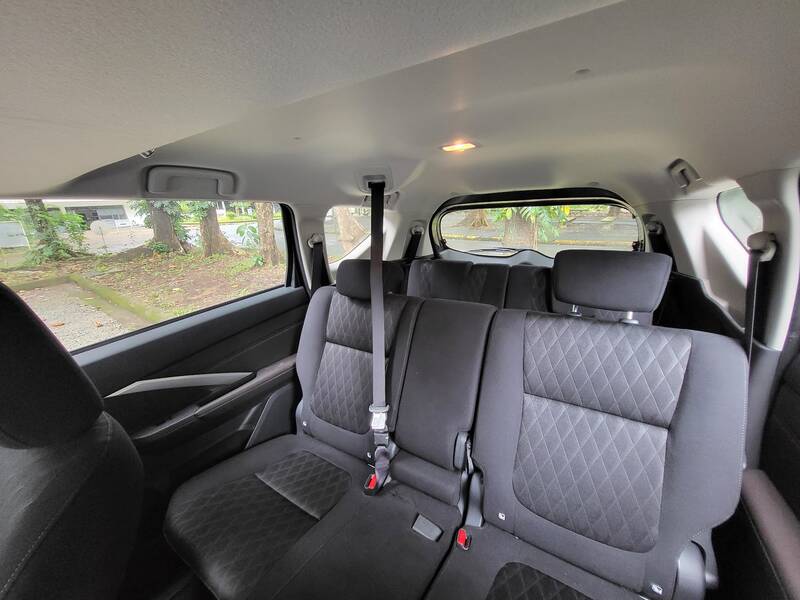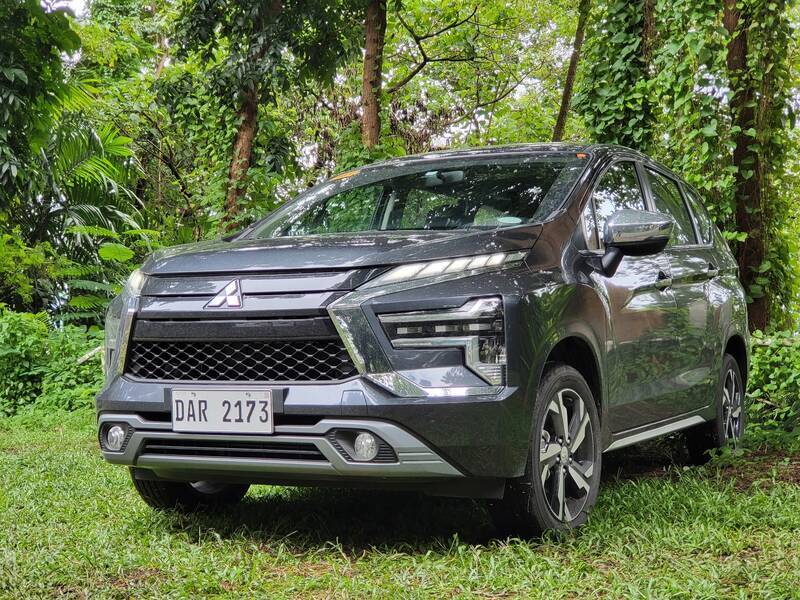DYNAMIC Shield may be to some, just a marketing marque that simply represents a design philosophy that went from drawing table to front grille. It however represents more than that. Dynamic Shield is Mitsubishi’s shift from mundane commercial vehicle design and platform to spun spiffy and spunky ones. It has already established its sportiness in many fields and the model’s rebrand that started in 2016.

It is an advantage to get to test drive cars last because they’ve been roughed up enough for all the squeaks and creaks to come out. Performances nuances too become obvious. Braking and acceleration either improve or degrade over time and use. Fabrics and interior materials fade or fray. 18,000 kilometers usually represents the average mileage one-and-a half or two-year travels of an urbanite doing 25 to 30 kilometers a day from home to office, with a quarterly long-distance vacation drive.
There is some confusion in the Xpander’s position as a multi-passenger or a multi-purpose vehicle (both share the acronym MPV). Mitsubishi made sure that the Xpander was clearly a seven-seater multi-passenger vehicle by giving it the full load of pro-passenger features: front dual airbags, seatbelts for all seven occupants, a super comfortable ride and matching quietness at that. The cabin isolation is at a very high level–even under the stretched articulation and bounciness at Mitsubishi’s ‘Reimagine Your Ride’ (RYR) activities that went around the Philippines.

“We are kicking off our regional test drive tour alongside the launch of the new Xpander…one of our goals for the year is to reach out to more customers outside the walls of our dealerships. So customers can expect us to be in their cities whether Luzon, Visayas, or Mindanao,” MMPC president and CEO Takeshi Hara said.”
I was at the Laguna leg of that great contained urban test track in Sta. Rosa, where the Xpander’s features like the traction control, Hill Start Assist, ABS with EBD, and Active Stability Control were put to the test. Gladly there were no tests for the airbags and the side impact beams but the rest of this MPV–its chassis strength and rigidity as well as engine power and transmission were put on the test and passed with high marks.

So clearly not lacking safety amenities, the tech part comes in. The Xpander carries Apple CarPlay and Android Auto incorporated into the 7-inch infotainment system. The system connects almost flawlessly with any mobile phone though it did have problems with older Android systems earlier than version 11. That said it is amazing to see mirroring capabilities and running Waze and Spotify on the screen.
Under the hood is Mitsubishi’s MIVEC 1.5L naturally aspirated four-cylinder gasoline engine that for me delivered excellent fuel economy (the average run was about 10.2 kilometers per highway and 8.3 for city driving). Overall performance is well above average with the conventional automatic transmission delivering what it should in most instances. Climbs and overtakes took a while but still it was done with confidence.
Now the 4-speed gearbox isn’t fancy nor is it complicated and Mitsubishi Motors Philippines Corp.’s choice (MMPC) with the torque converter versus the belt-driven one shined at the RYR event. Despite the CVT’s advantage in terms of fuel efficiency and quickness of gear play, the conventional shifter seemed to have given more oomph and the feeling of power.
The 2022 Xpander now has electronic parking and active brakes. I am not sure I fancy this addition especially with the conventional transmission which disengages less rapidly than a CVT. As tested however, my theory was disproved as both the auto brake hold function and push button parking worked flawlessly.
It is so easy to say it fits seven people. Remember how the old Honda CR-V (of eons back) claimed 10 seat without mentioning that the sardine can squashing? The Xpander’s interior space is quite large for its class and for its dimensions. No sardine-can squashing here. Ample leg, shoulder, head and arm room is available all the way to the third row.

The third row deserves a couple of more column inches because of (1) it being a proper seat with sufficient foam isolation and (2) a properly angled back that can recline somewhat to provide strong support and enough seat angle and floor depth so that even average height adults can fit in without feeling excluded or punished. The fold-up benches quadruple the rear cargo space when needed. Moreover, there is a lot of cubbyholes, cupholders and storage areas all throughout the cabin. What is sorely needed though are more USB sockets.
 Now the changes on the Xpander’s exterior design are noteworthy but best seen at the showroom. That ‘dynamic shield’ upgrade I talked about earlier makes a clear separation between the generations but still keeps that sharp, robot-y. The top-spec GLS variant, which I tested comes with a weird mix of soft touch materials, brushed aluminum plastics and carbon fiber pieces.
Now the changes on the Xpander’s exterior design are noteworthy but best seen at the showroom. That ‘dynamic shield’ upgrade I talked about earlier makes a clear separation between the generations but still keeps that sharp, robot-y. The top-spec GLS variant, which I tested comes with a weird mix of soft touch materials, brushed aluminum plastics and carbon fiber pieces.
A vehicle such as the Xpander is one that is impresses much. And is hard to let go. At this time of thinking of replacing cars, I am pushing my family to consider it versus a diesel burner AUV. And for good reason. With the price of diesel not seeing any reprieve anytime soon, the MPV can be an excellent choice, considering the top of the line GLS A/T is only P1.180M. The manual transmission GLX M/T retails for only P1.050M and the mid-range GLX A/T at P1.110M. At these prices, the Xpander is a most exciting, comfortable and vibration-free choice.





